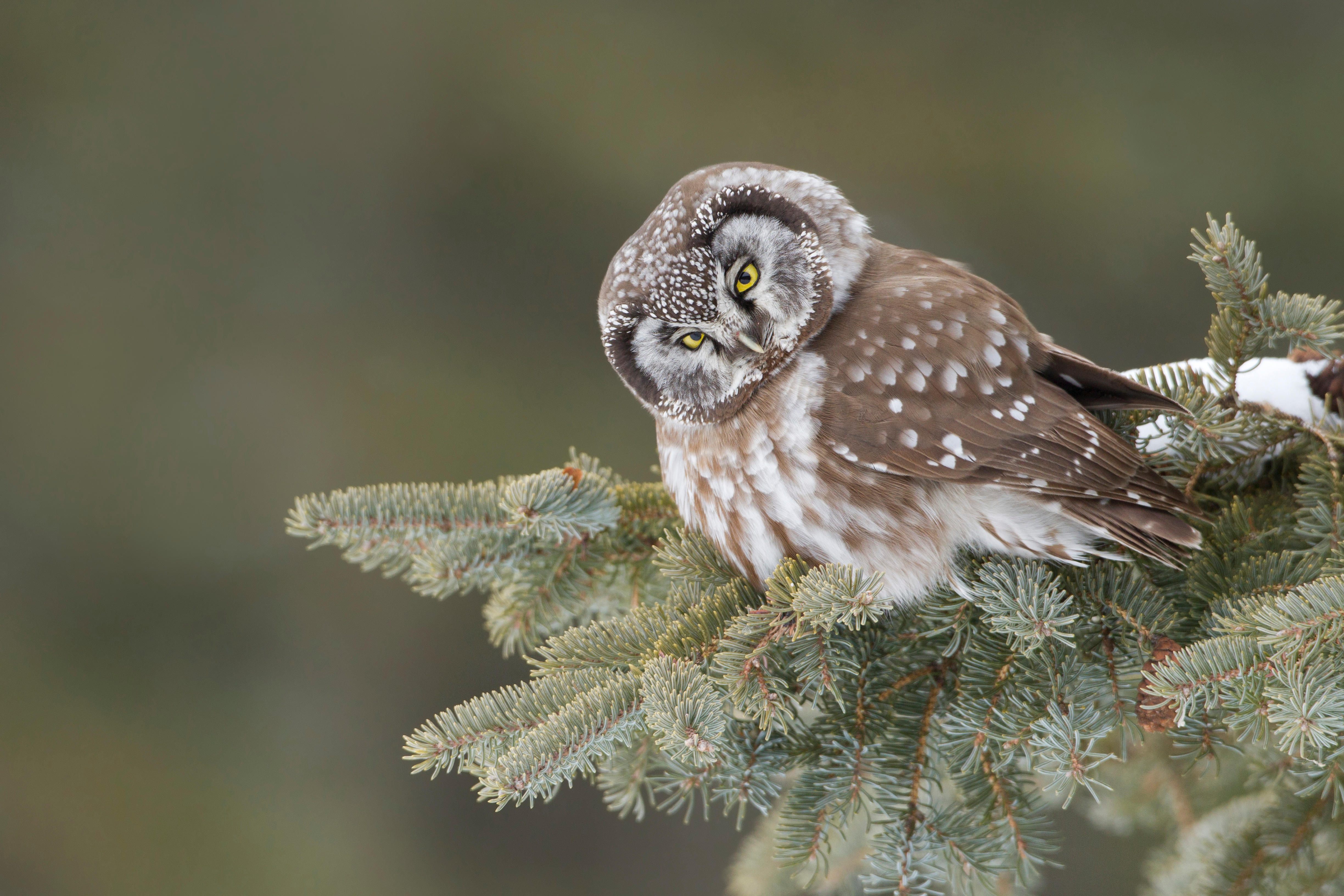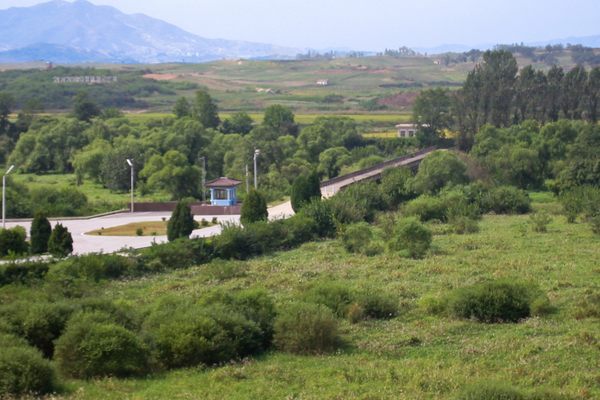The Poo-Poo Project Is Saving Birds From a Dirty Demise
How to make campground toilets more wildlife-friendly.

Joe Foust, district wildlife biologist for Boise National Forest’s Cascade Ranger District, was at work in 2009 when he received a memorable call. A forest visitor had reported an owl stuck in a campground vault toilet—could he take a look?
When he arrived at the campground, he found a note on the toilet imploring those who had to “go” to find a different place to do their business because there was an owl trapped inside. Foust peered down into the hole. “Sure enough, there was a little owl looking up at us out of this vault toilet,” he says.
Vault toilets are common in campgrounds, and these waterless, no-flush toilets simply drop the waste below into an underground tank, which is periodically pumped out by a septic truck. Going around to the side of the vault, Foust opened the trap door to the waste tank. “It was just sitting there on the pile in the vault,” he says. “It wasn’t wet or dirty at all.”
But the bird’s cleanliness didn’t last for long. “I had taken a long fishing net just in case,” Foust says. “I got the net right up to its feet. It started to go crazy, fly, and bounce around. It got itself soaking wet and nasty.”
Once he was able to net the bird and pull it out, a colleague helped him clean it. Donning a garbage bag (“something to reduce the splatter a little bit,” according to Foust) and gloves, he held the owl as a colleague dumped all the water they had, about three gallons or so, over the frightened, excrement-covered bird.
After it was relatively clean, Foust took the bird into the woods to let it go. “I imagine he wasn’t popular at any parties for a long time,” he says. “He still stunk pretty bad.”

How does an owl get trapped in a vault toilet? A surprising number of birds find themselves entrapped in various pipes, including the vent pipes on vault toilets, when they are looking for a quiet, dark space to nest or roost for the night or to get out from the elements. Birds that seek out these spaces are often called “cavity-nesting birds.”
“They see that inviting pipe, and if the walls are slick and they can’t get back out, it funnels them right down to the vault,” Foust says.
Foust’s owl rescue inspired a group of bird lovers at the Teton Raptor Center in Wilson, Wyoming, to come up with a solution to prevent future entrapments. Teton Raptor Center executive director Amy Brennan McCarthy and board chair Roger Smith saw photos of the owl trapped in the toilet and started looking into ways to keep birds out of the vent pipes.
The “Poo-Poo Project” was soon born. It stands for the “Port-o-Potty Owl Project” and the moniker definitely gets people’s attention. “It’s a catchy name,” says Teton Raptor Center Poo-Poo Project coordinator David Watson. “It makes people laugh and catches them off guard a little bit. It’s a very simple solution to an entrapment issue.”

Teton Raptor Center worked with a company based in Rexburg, Idaho, to produce powder-coated steel screens to cap vault toilet vents, allowing for air circulation while also keeping wildlife out. The screens have a very simple, four-screw installation process. The price was also right: just $29.95 a piece.
The organization started selling the screens to land management agencies in 2013, and have now sold over 11,000. They are working with more than 395 partners, and currently have screens in all 50 states, the U.S. Virgin Islands, and Canada. Screens can be found everywhere from Alaska’s Denali National Park to Minnesota’s Superior National Forest, and from Florida’s Everglades National Park to the Cape Cod National Seashore in Massachusetts.
Dave Trevino, wildlife biologist for the National Park Service’s Biological Resources Division, is the driving force behind the park service’s screen installation at partner sites. “The park service has an obligation to protect and preserve species within parks… If we are having animals that are having preventable fatalities in our park then it’s our obligation to prevent them, especially if it’s as simple a mitigation as a $30 screen and four screws,” Trevino says.

While the exact number of bird fatalities in vault toilets is unknown, it’s likely that many of the animals who perish in the pits are simply pumped out with the muck by septic trucks.
“There’s no real scientific study about vault toilets and what goes in and what comes out,” Watson says. “That’s not a sexy project. No one wants to sift through that stuff. It’s not a thing grad students are clamoring to do, and there’s not a lot of research.”
However, Watson says he’s familiar with a number of different species becoming trapped in the toilets, including many cavity-nesting birds, such as owls and kestrels, and very rarely, other critters, such as foxes. The latter can become trapped in high snow years when the snow is tall enough to allow them to access the pipe. The owl Foust found in the Boise National Forest vault toilet wasn’t the only bird he’s personally found in such straits either—on another occasion, he found a small crow or blackbird (he wasn’t sure which) that did not survive.

Bird lovers from around the country and around the world are doing their part to save cavity-nesting birds from a stinky fate. A Boy Scout and avian aficionado in Utah worked with Antelope Island State Park to install 21 screens in the park as his Eagle Scout project.
Up in Montana, Lou Ann Harris, board vice president and co-conservation chair of Bozeman’s Sacajawea Audubon Society Chapter, has actively supported the Poo-Poo Project ever since she learned about it around two years ago. Each year, her chapter budgets for a number of screens and works with local agencies to install them. The chapter initially bought 20 screens and continues to budget for more. “In our region, there are over 1,300 vault toilets,” Harris says. “We’ll start small and just keep working at it.”
Teton Raptor Center also hosts a “sponsor a screen” program which allows people to purchase a screen to be installed on a participating land agency’s vault toilet. Donors receive an email letting them know just where the screen they sponsored was installed. Since June 2016, sponsors have purchased nearly 900 of the screens to donate.
“It’s been a fun project to work on, and we still have a lot of work to do,” Watson says.



















Follow us on Twitter to get the latest on the world's hidden wonders.
Like us on Facebook to get the latest on the world's hidden wonders.
Follow us on Twitter Like us on Facebook